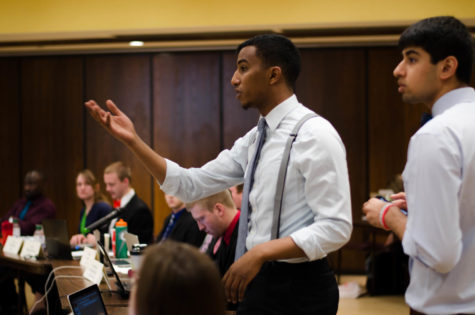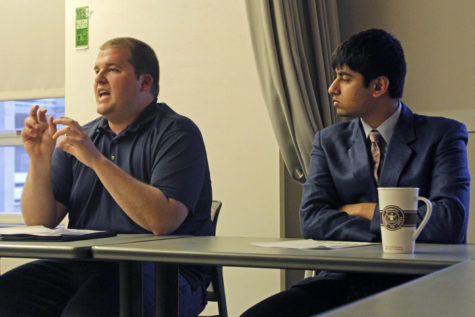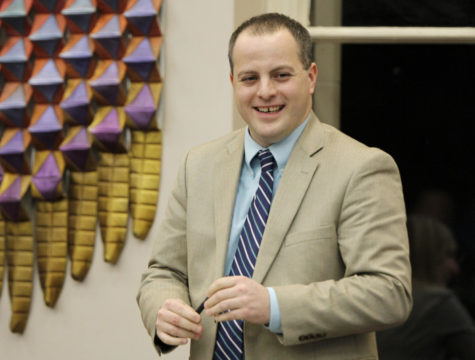A Cyclone Century
December 7, 1999
Editor’s note: This is the seventh article in a 10-part series examining significant events and the climate of the campus at Iowa State in each of this century’s decades. The stories are based on articles from the Daily during those time periods. Today’s article will look at the years 1960-1969.
The 1960s at Iowa State were some of the most exciting, tense, turbulent and yet productive years the campus has ever seen.
With its new status as a university and with President James H. Hilton at the helm, ISU grew at a nearly exponential rate during the 1960s. Enrollment hovered around 10,000 at the beginning of the decade but by 1967 was at 16,841 students, and that figure climbed to 18,083 only a year later.
With this soaring enrollment came an enormous campus construction effort. During the 1960s, more buildings popped up on the ISU campus than during any other decade.
Residence halls Buchanan, Storms, Knapp, Maple, Wallace, Wilson and Willow all were built between 1964 and 1969. University Village was also constructed in 1968, and Oak and Elm halls were merged into one structure in 1965.
Academic buildings Pearson, Beyer, Kildee, Bessey and Carver Halls were all built in the 1960s, as well as Lush Auditorium in Kildee Hall and the Industrial Education building.
The decade also saw the construction of the first building of the Iowa State Center, Stephens Auditorium.
But with the unprecedented growth also came an unprecedented desire for independence and freedom by students.
As early as 1960, students were conducting demonstrations to show their discontent with university and city policy alike.
One of the first such uprisings was a riot on the steps of city hall during 1960, which was spurred by the arrest of an ISU student who was found guilty of “acting suspicious” on a city sidewalk after 11 p.m.
Such demonstrations, peaceful and otherwise, became the status quo during the 1960s. And unlike previous students who exercised their rights to free assembly, students during the 1960s did so not to cajole the president into granting the student body an extra day off of school. Instead ISU students in the 1960s demonstrated for causes that were affecting the whole nation — issues such as civil rights and the Vietnam War.
There was tense debate over the draft in particular. The Government of the Student Body (which had been the Cardinal Guild up until the mid-1960s), urged the administration to be more lenient on the reports of “normal progress,” which were sent to students’ local draft boards. If a student was not progressing at what was deemed an acceptable rate, he could lose his deferment and become eligible for military service.
Students also fought to secure more rights for female ISU students, who at the beginning of the decade still were subjected to stringent curfews and housing regulations. By the end of the 1960s, female students at ISU (barring freshmen) were free to go as they pleased.
And although civil rights would become a larger issue on campus during the early 1970s, many students became involved with the movement led by Dr. Martin Luther King Jr. Several fraternities were investigated during the decade for alleged racial discrimination, and the Daily gave heavy play to the plight of one black ISU student who attempted to transfer to the all-white Clemson College to study architecture.
It was tremendously fortunate, then, that when President Hilton resigned in 1965, the post of president would be filled by a social scientist adapt at handling a tense atmosphere — W. Robert Parks. Parks’ original field of study had been political science, and as a professor at ISU, he taught courses in government.
Parks was one of the most well-liked presidents in ISU history. His poise during a time when many university presidents across the country were an object of students’ hatred earned him the respect of not only fellow administrators and faculty members, but the students of Iowa State as well.
Parks’ most trying time as president and perhaps the most trying time in the history of ISU was in the spring of 1967, when a student radical, Don Smith, was elected GSB president.
Smith was a member of the Students for a Democratic Society (SDS), a liberal organization with a reputation for being confrontational that had opened up a chapter at ISU in 1965. Smith also kept medium-length hair, almost down to his ears. He sported a full beard and was known for not wearing socks.
By today’s standards, Smith probably would stick out less than a traditional 1960s fraternity president, but at the time, he was a fish out of water on a rural, traditionally agricultural campus.
During his campaign, Smith presented a platform of liberal ideas that included establishing a student bill of rights, and he also pledged to take Iowa State “kicking and screaming into the 20th century.”
The basic thrust of Smith’s vision for ISU was that beyond the classroom, a university should have no control over its students. It was on the strength of that goal that Smith was elected on Feb. 10, 1967 with 3,292 votes.
His closest competitor in the election that produced one of the highest turnouts in GSB history (a little less than 50 percent of the student body voted) was the conservative Mark Sohn at 2,439 votes.
And so the media onslaught began. News organizations across the country ran stories about the “sockless rebel” who had come to power in little Ames, Iowa. State legislators claimed Smith was a “disgrace,” and many ISU students loudly and publicly expressed their disapproval of Smith.
Smith was a natural public speaker and leader, and he was charming and endearing in front of audiences and for reporters. But another trait of his — candor — ultimately brought about his undoing.
After rumors began to swirl through campus that Smith had held a “marijuana party,” to which he invited a Life magazine photographer and reporter, former Daily editor Eric Abbott asked him flat-out if he had ever used marijuana, and Smith confirmed that he had.
The Daily then published a story on April 6, 1967, that asserted Smith had indeed attended an Ames marijuana party and had smoked the illegal drug.
That was the final straw for ISU’s student body, which was beginning to get annoyed with Smith’s public use of profanity and other faux pas. By April 17, after 40 days in office, Smith, senior in engineering from Rockwell City, climbed onto his motorcycle and drove to California, effectively resigning his post as GSB president.
But confrontations between students and the status quo did not end when Smith left campus. And they did not end when the 1960s ended, either.









